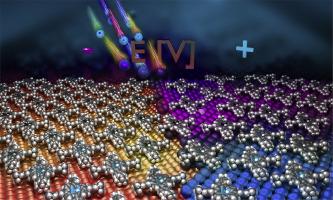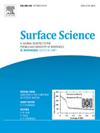电化学表面科学:单晶金属电极上卟啉分子的自组装
IF 2.1
4区 化学
Q3 CHEMISTRY, PHYSICAL
引用次数: 0
摘要
要详细了解表面和界面的特性和过程,至少需要两类最基本的信息:化学成分和分布以及结构。超高真空条件下的表面科学具有得天独厚的高灵敏度和最高的空间和时间分辨率,因为任何类型的探针光束都可以自由进入表面,但在环境条件下,即与气体或液体接触时,对固体表面的研究长期以来仅限于使用基于积分光子的反射、吸收、发射和衍射方法。在扫描隧道显微镜(STM)及其后的近距离探针(SPM)变体问世后,超高真空表面科学与环境界面研究之间的这一 "方法论鸿沟 "立即(至少是部分)得以弥合。这类方法在环境条件下的完全适用性为获得固液界面结构信息打开了大门,其分辨率可与室温下的超高真空相媲美,这对于理解界面电化学等问题来说是一次 "质的飞跃"。这反过来又突出了可靠测定固液界面化学成分和分布的需要,推动了原位 X 射线光电子能谱(XPS)的发展。在本文中,我们将以阴离子修饰的金属/电解质界面上卟啉的相互作用和自组装为例,介绍系统的原位 STM 测量和结果。这类分子层的原子和亚分子分辨电位静力学和电位动力学原位 STM 图像如今已成为标准图像,有待深入的理论分析。本文章由计算机程序翻译,如有差异,请以英文原文为准。

Electrochemical surface science: Self-assembly of Porphyrin molecules at single crystal metal electrodes
A detailed understanding of properties and processes at surfaces and interfaces requires at least two types of most basic information, chemical composition and –distribution as well as structure. While surface science in ultrahigh vacuum is blessed with a plethora of high sensitivity and highest spatial and temporal resolution due to the free accessibility of the surfaces by any kind of probe beams, investigations of solid surfaces under ambient conditions, i.e. in contact with gases or liquids, were for a long time restricted to the use of integral photon-based reflection-, absorption-, emission-, and diffraction methods. This “methodological gap” between UHV surface science and environmental interface research became immediately, at least partially, closed after the realization of the scanning tunneling microscope (STM) and following variants of proximity probes (SPM). The full applicability of this class of methods also under ambient conditions opened the door to structure information of solid-liquid interfaces of comparable resolution as in UHV at room temperature, a “quantum leap” for the understanding of e.g. interfacial electrochemistry. This, in turn, highlighted the need of reliable determination of the chemical composition and distribution at solid-liquid interfaces and pushed the development of in situ X-ray photoelectron spectroscopy (XPS).
The availability of both techniques, in situ SPM and in situ XPS closes the former methodological gap between the research in UHV and under ambient conditions. In particular, interfacial electrochemistry, being primarily interested in chemical processes at electrode/electrolyte interfaces benefits decisively of this development.
In this article, as an example, we present systematic in situ STM measurements and results on the interactions and self-assembly of porphyrins at anion modified metal/electrolyte interfaces, an important class of molecules for the functionalization of surfaces for various applications. Atomically and sub-molecularly resolved potentiostatic and potentiodynamic in situ STM images of such molecular layers are nowadays standard and wait for an in-depth theoretical analysis.
求助全文
通过发布文献求助,成功后即可免费获取论文全文。
去求助
来源期刊

Surface Science
化学-物理:凝聚态物理
CiteScore
3.30
自引率
5.30%
发文量
137
审稿时长
25 days
期刊介绍:
Surface Science is devoted to elucidating the fundamental aspects of chemistry and physics occurring at a wide range of surfaces and interfaces and to disseminating this knowledge fast. The journal welcomes a broad spectrum of topics, including but not limited to:
• model systems (e.g. in Ultra High Vacuum) under well-controlled reactive conditions
• nanoscale science and engineering, including manipulation of matter at the atomic/molecular scale and assembly phenomena
• reactivity of surfaces as related to various applied areas including heterogeneous catalysis, chemistry at electrified interfaces, and semiconductors functionalization
• phenomena at interfaces relevant to energy storage and conversion, and fuels production and utilization
• surface reactivity for environmental protection and pollution remediation
• interactions at surfaces of soft matter, including polymers and biomaterials.
Both experimental and theoretical work, including modeling, is within the scope of the journal. Work published in Surface Science reaches a wide readership, from chemistry and physics to biology and materials science and engineering, providing an excellent forum for cross-fertilization of ideas and broad dissemination of scientific discoveries.
 求助内容:
求助内容: 应助结果提醒方式:
应助结果提醒方式:


